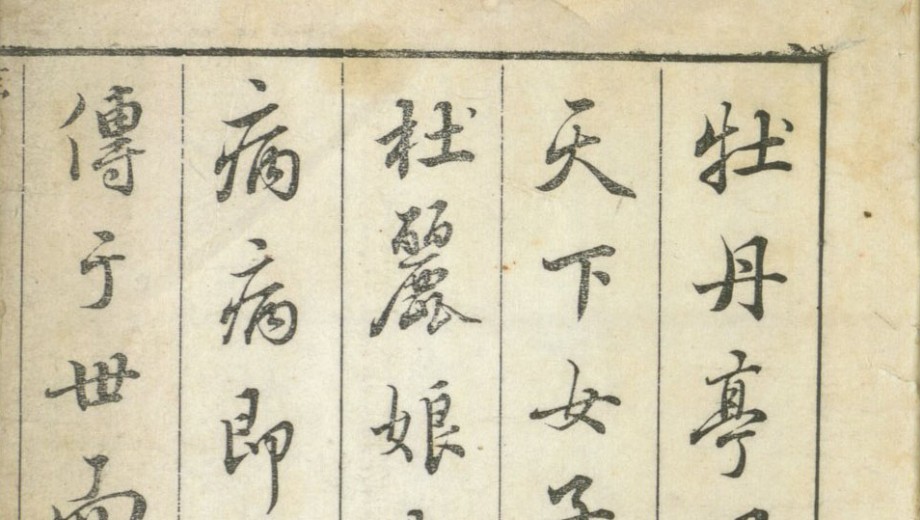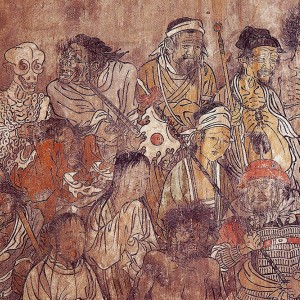Many of China’s romantic ghost stories crystallized around one long, famous opera completed in 1598 called The Peony Pavilion, by Tang Xianzu.
The Peony Pavilion tells the story of a beautiful girl, Du Liniang, who falls in love with a handsome scholar she meets in a dream. She wakes up, overcome with longing for this man, and gradually falls ill and wastes away. After her death she persuades a judge in the underworld to grant her permission to return as a ghost to find him. (Such a bureaucratic society—a ghost needs official travel documents, like a passport, to visit the land of the living.)
She eventually finds the man, a young scholar staying at the temple where she is buried. They enter into a passionate affair and wish to marry, but he must first dig her up. His love brings her back to life when he opens the coffin, and eventually they live happily ever after.
The play was an immediate success both on the page and the stage; one Chinese critic compared its reception in the seventeenth century to the popularity of Goethe’s Sorrows of Young Werther. Selected scenes remained in the operatic repertory over the centuries, but the underworld scene was the only ghost one commonly performed.
In the late 1990s, a new effort arose to try to stage the play—which runs 55 acts—in its near entirety, which led to the return of the amorous ghost scenes to the theater. Those initial productions, in turn, inspired many different stage versions, with the result that The Peony Pavilion now may be the most performed opera in China today. In December 2014 alone, 12 companies mounted 12 different productions in Beijing in a “battle of the Peonies.”


